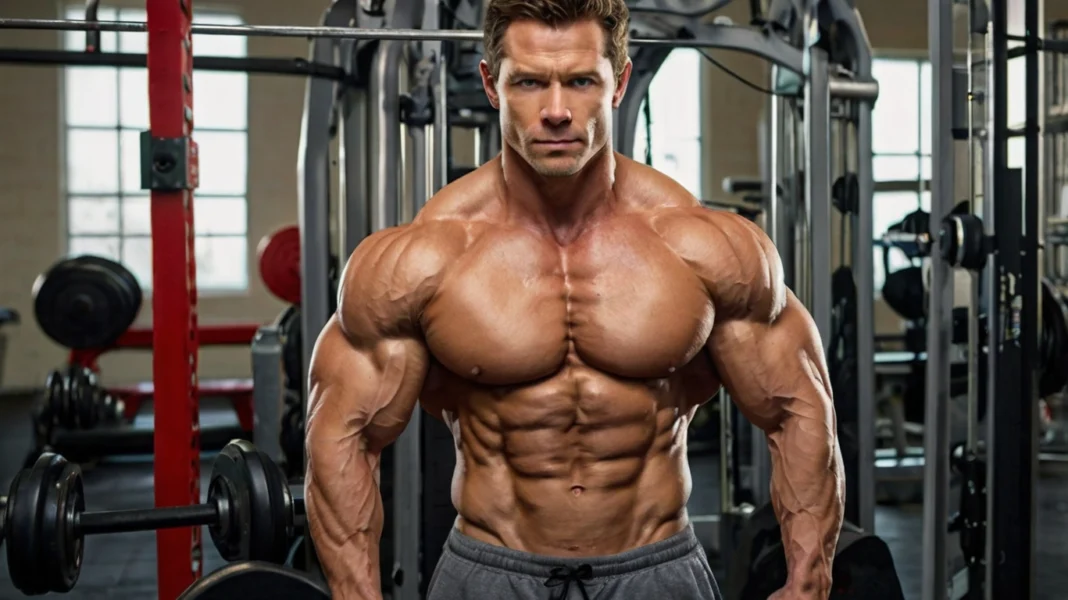Introduction
Building muscle is more than just about aesthetics—it’s about well-health. Muscle development improves strength, boosts metabolism, and supports joint health. In this guide, we’ll explore an effective approach to building muscle, touching on everything from nutrition to workout routines. Ready to dive in? wellhealth how to build muscle tag?
Understanding Muscle Growth (Hypertrophy)
Muscle growth, or hypertrophy, occurs when muscle fibers are damaged during exercise and then repaired, making them stronger and larger. Achieving this requires both intensity in workouts and consistency, which ensures continuous adaptation and growth.
Setting Realistic Muscle-Building Goals
Setting achievable goals helps keep motivation high. Short-term goals, like increasing weight on specific exercises, can provide quick wins, while long-term goals, like adding inches to your biceps, help keep the big picture in mind. Tailor your goals based on your starting point and desired outcome. wellhealth how to build muscle tag ?
Key Factors in Muscle Growth
Muscle growth is influenced by a few core factors:
- Nutrition for fuel and repair
- Training intensity and volume to challenge muscles
- Rest and recovery for muscle repair and growth
Best Diet for Building Muscle
A balanced diet fuels muscle growth. Focus on:
- Proteins for muscle repair
- Carbohydrates for energy
- Fats for hormone production
Additionally, micronutrients (like vitamins D and C) are essential for muscle health.
Importance of Protein for Muscle Growth
Protein is a must for muscle repair and growth. Aim for 1.6–2.2 grams of protein per kilogram of body weight. High-quality sources include:
- Chicken, turkey, and lean beef
- Fish and seafood
- Eggs and dairy
Carbohydrates and Their Role in Energy
Carbohydrates provide the energy needed for intense workouts. Opt for complex carbs (whole grains, vegetables, and legumes) to sustain energy and aid muscle recovery.
The Role of Fats in Muscle Building
Healthy fats are essential for hormone regulation, including testosterone, which supports muscle growth. Aim for fats from sources like:
- Avocados
- Nuts and seeds
- Olive oil and fatty fish
Effective Workout Techniques for Muscle Gain
Exercises fall into two main categories:
- Compound exercises (e.g., squats, bench press) engage multiple muscle groups.
- Isolation exercises (e.g., bicep curls) target specific muscles.
A combination of both maximizes overall growth.
Creating a Muscle-Building Workout Routine
A solid routine balances intensity, volume, and recovery. Consider starting with:
- Three to five sessions per week
- Reps of 6–12 and sets of 3–4 per exercise
- Rest intervals of 60–90 seconds between sets
Progressive Overload: The Key to Continuous Growth
Progressive overload means gradually increasing weight or reps to keep challenging your muscles. This continuous challenge promotes strength and size.
Importance of Rest and Recovery
Muscle growth happens during rest. Aim for:
- 7–9 hours of quality sleep nightly
- At least 48 hours of recovery between training the same muscle groups
Tracking Your Progress
Tracking helps you see what’s working and what’s not. Consider using fitness apps to log workouts, measure progress, and adjust as needed.
Common Mistakes to Avoid
Avoid these common missteps:
- Overtraining, which can lead to burnout
- Neglecting nutrition and rest, which impedes growth
Conclusion
Building muscle is a holistic process that combines effort, discipline, and strategy. Whether you’re a beginner or advanced, this guide offers the foundation to help you on your journey. Stay consistent, and you’ll see rewarding results over time!
Also Read This Article india national cricket team vs england cricket team timeline,




